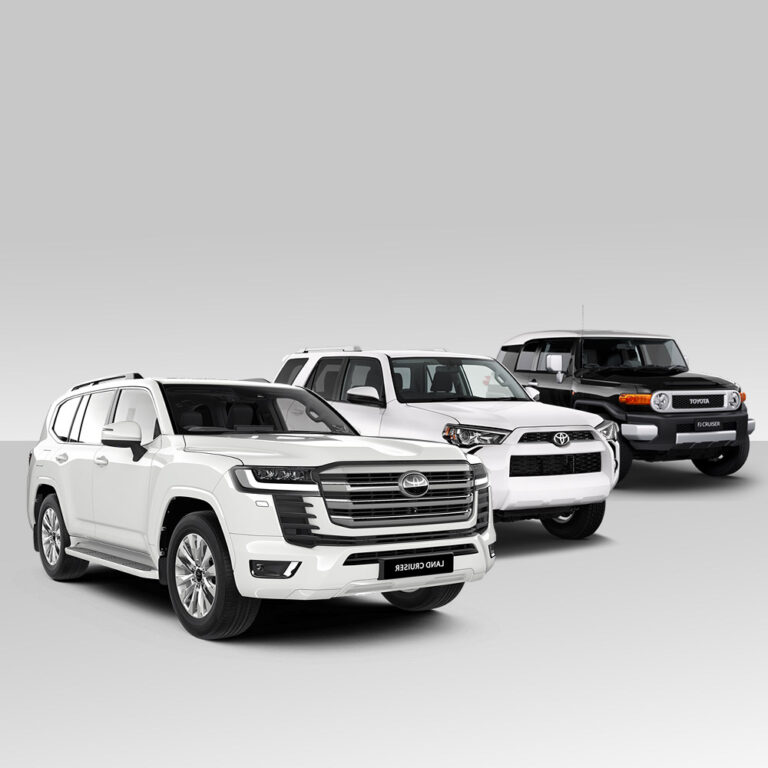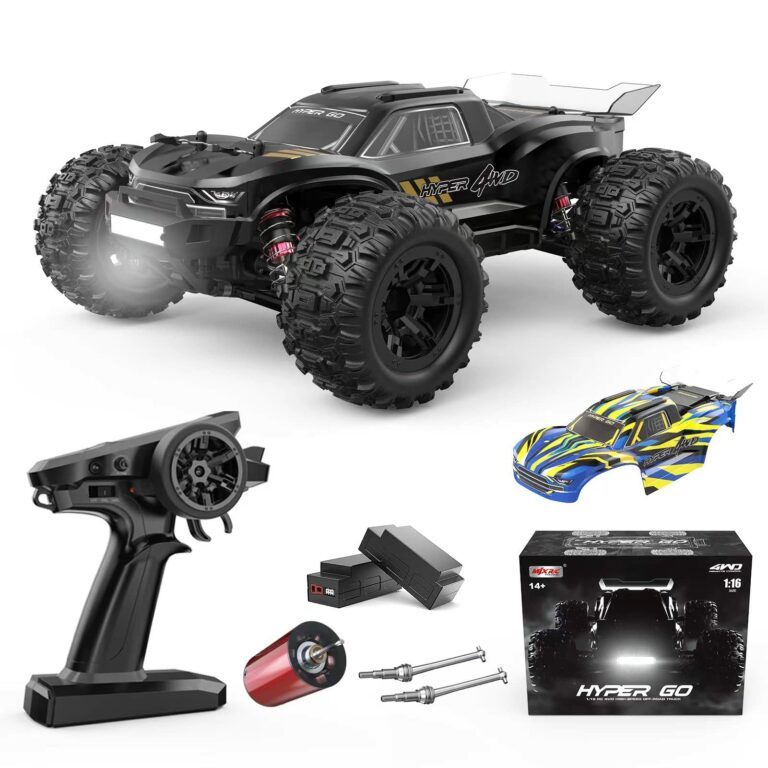Top 5 Car Stereo Brands: Elevating Your In-Car Audio Experience
Top 5 Car Stereo Brands: Elevating Your In-Car Audio Experience cars.truckstrend.com
The car stereo, or head unit, is the command center of your vehicle’s infotainment system. Far more than just a radio, modern car stereos integrate navigation, smartphone connectivity, advanced audio processing, and a host of other features that transform your daily commute into an engaging, enjoyable experience. A high-quality car stereo isn’t just about blasting your favorite tunes; it’s about crisp, clear sound, seamless connectivity, intuitive control, and often, enhanced safety through hands-free operations.
Choosing the right car stereo can feel overwhelming with the myriad of options available. This comprehensive guide will simplify the process by focusing on the top 5 car stereo brands renowned for their innovation, reliability, sound quality, and user experience. We’ll delve into what makes each brand stand out, key considerations before your purchase, practical installation advice, and tips to maximize your audio enjoyment.
Top 5 Car Stereo Brands: Elevating Your In-Car Audio Experience
Understanding Your Car Stereo Needs: The Foundation of a Great Choice
Before diving into specific brands, it’s crucial to understand what you need and want from a car stereo. This foundational step ensures you select a unit that perfectly complements your vehicle, your listening habits, and your budget.
1. Single DIN vs. Double DIN: The Size Matters
The most basic compatibility check involves the physical size of the head unit.
- Single DIN (1DIN): Approximately 2 inches tall and 7 inches wide. These are the standard size for older vehicles or cars with smaller dash openings. Modern single DIN units can still offer advanced features, sometimes with flip-out screens.
- Double DIN (2DIN): Approximately 4 inches tall and 7 inches wide. These larger units are common in most newer vehicles and easily accommodate large touchscreens, making them ideal for Apple CarPlay, Android Auto, and built-in navigation.
Always check your car’s dash opening or consult your vehicle’s manual or an online car stereo fit guide.

2. Essential Features to Look For:
The modern car stereo is a hub of connectivity and entertainment. Consider which features are non-negotiable for you:
- Smartphone Integration:

- Apple CarPlay & Android Auto: These are game-changers, mirroring your phone’s essential apps (navigation, music, messaging, calls) onto the stereo’s screen, controllable via touch or voice commands.
- Bluetooth: Essential for hands-free calling and wireless audio streaming.
- USB & AUX Inputs: For playing music from USB drives or connecting older devices.
- Navigation: Built-in GPS is convenient, though CarPlay/Android Auto often make dedicated navigation less critical for smartphone users.
- Sound Quality & Customization:
- Power Output (RMS): The continuous power the unit can deliver to speakers (RMS is more important than peak power).
- Equalizer (EQ): Allows you to adjust bass, treble, and mid-range frequencies. More bands (e.g., 13-band EQ) offer finer control.
- Digital Sound Processing (DSP): Advanced features like time alignment, crossover settings, and sound staging to optimize audio for your car’s acoustics.
- Pre-amp Outputs: Crucial if you plan to add external amplifiers for speakers or subwoofers. Look for at least 2 pairs (front/rear) and a subwoofer output, with 4V or higher for cleaner signals.
- Tuner: AM/FM radio, HD Radio for better fidelity, and Satellite Radio (SiriusXM ready) for broader content.
- CD/DVD Player: Less common now, but still available for those with disc collections.

3. Budget Considerations:
Car stereos range widely in price, from under $100 for basic units to over $1,000 for high-end multimedia receivers. Define your budget early to narrow down options. Remember that installation costs (if professional) and accessories (dash kits, wiring harnesses) will add to the total.
The Top 5 Car Stereo Brands: A Deep Dive
These brands consistently lead the market, offering a blend of innovation, quality, and performance that caters to a wide range of users, from the casual listener to the serious audiophile.
1. Pioneer: The Innovator and All-Rounder
Reputation: Pioneer has been a dominant force in car audio for decades, known for its cutting-edge technology, user-friendly interfaces, and reliable performance. They are often at the forefront of adopting new features like Apple CarPlay and Android Auto.
Key Strengths:
- Cutting-Edge Connectivity: Pioneer was among the first to widely integrate Apple CarPlay and Android Auto across many of its models, making smartphone integration seamless.
- Wide Product Range: From entry-level CD receivers to premium multimedia navigation systems (like the NEX series), Pioneer offers something for every budget and need.
- Excellent Sound Processing: Many Pioneer units feature advanced audio tuning capabilities, including sophisticated EQs, time alignment, and high-quality pre-amp outputs, ensuring excellent sound quality even before adding external amplifiers.
- Intuitive User Interface: Their touchscreen interfaces are generally well-designed and easy to navigate.
Target Audience: Ideal for tech-savvy users who prioritize seamless smartphone integration, advanced features, and a brand with a strong reputation for innovation and reliability.
2. Kenwood: Feature-Rich and Reliable
Reputation: Kenwood is celebrated for its robust build quality, comprehensive feature sets, and a long-standing commitment to car audio excellence. They are often praised for their user-friendly interfaces and strong integration capabilities.
Key Strengths:
- Garmin Navigation Integration: Many high-end Kenwood units feature built-in Garmin navigation, offering a reliable and familiar mapping experience without relying on a smartphone.
- Comprehensive Sound Tuning: Kenwood Excelon series head units are particularly well-regarded for their extensive sound customization options, including powerful DSPs, digital time alignment, and high-voltage pre-amp outputs for superior sound quality.
- Excellent Connectivity: Like Pioneer, Kenwood offers strong support for Apple CarPlay, Android Auto, and various other connectivity options.
- Durable and User-Friendly: Their units are known for being reliable and having intuitive controls, making them easy to operate while driving.
Target Audience: Great for users who want a feature-packed unit with reliable performance, especially those who prefer dedicated navigation and extensive sound tuning capabilities.
3. Sony: Sleek Design and High-Resolution Audio
Reputation: While a giant in consumer electronics, Sony has carved out a niche in car audio by focusing on sleek designs, user experience, and a strong emphasis on high-resolution audio playback.
Key Strengths:
- Hi-Res Audio Support: Many Sony car stereos are designed to play high-resolution audio files (e.g., FLAC, DSD), offering a more detailed and immersive listening experience than standard MP3s.
- Elegant and Minimalist Design: Sony units often feature clean lines and large, responsive touchscreens with customizable interfaces, appealing to those who value aesthetics.
- Quick Wake-up Time: Their newer units boast incredibly fast boot-up times, meaning your music and navigation are ready almost instantly after starting your car.
- Clear and Punchy Sound: Sony’s sound processing tends to deliver a vibrant and energetic audio signature, appealing to a broad range of listeners.
Target Audience: Perfect for users who prioritize modern aesthetics, fast performance, high-resolution audio playback, and a generally smooth user experience.
4. Alpine: The Audiophile’s Choice and Premium Experience
Reputation: Alpine is synonymous with premium car audio. They cater to enthusiasts and audiophiles who demand the absolute best in sound quality, advanced features, and often, vehicle-specific integration.
Key Strengths:
- Unparalleled Sound Quality: Alpine is renowned for its advanced sound processing technologies (e.g., MediaXpander, Power IC), which deliver exceptional clarity, detail, and dynamic range. Their units often feature high-end DACs (Digital-to-Analog Converters).
- Large Screen Displays: Alpine’s "Halo" series features floating touchscreens that often exceed the standard double DIN size (e.g., 9-inch or 11-inch), providing an immersive visual experience.
- Vehicle-Specific Solutions: Alpine offers a range of Restyle head units designed to perfectly integrate into specific vehicle models, often replacing climate controls and other factory functions with a seamless, OEM-like fit.
- Robust Build and Components: Known for using high-quality internal components that contribute to both sound fidelity and durability.
Target Audience: Ideal for serious audio enthusiasts, those willing to invest in a premium experience, and owners of specific vehicles for which Alpine offers a custom Restyle solution.
5. JVC: Value, Versatility, and User-Friendliness
Reputation: JVC, often associated with Kenwood (as part of JVCKenwood), provides excellent value, offering a solid balance of essential features, good sound quality, and reliable performance without breaking the bank.
Key Strengths:
- Great Value Proposition: JVC units consistently offer a strong feature set for their price point, making them an excellent choice for budget-conscious consumers.
- User-Friendly Operation: JVC stereos are generally straightforward to operate, with intuitive menus and responsive controls.
- Solid Feature Set: Many JVC models include popular features like Apple CarPlay, Android Auto, Bluetooth, and good sound customization options, making them versatile for everyday use.
- Reliable Performance: While perhaps not as flashy as some premium brands, JVC units are known for their consistent and dependable operation.
Target Audience: An excellent choice for the average consumer seeking a reliable, feature-rich car stereo that offers great value for money, without necessarily needing the most advanced audiophile-grade features.
Important Considerations When Purchasing and Installing
- Compatibility Check is Paramount: Always double-check that your chosen head unit fits your vehicle’s dash opening (single DIN vs. double DIN). You will almost certainly need a dash kit (also called a trim kit or install kit) to ensure a factory-like fit, and a wiring harness adapter to connect the new stereo to your car’s factory wiring without cutting wires. A steering wheel control adapter is also needed if you want to retain your factory steering wheel audio controls.
- Installation: DIY vs. Professional:
- DIY: Can save money and be a rewarding project if you’re comfortable with basic wiring and disassembling car panels. Online resources (YouTube, forums) are abundant.
- Professional: Recommended if you’re unsure, lack tools, or have a complex vehicle system. Professionals ensure proper wiring, functionality of all features (including steering wheel controls), and often offer a warranty on their work.
- Future System Upgrades: If you plan to add external amplifiers, new speakers, or a subwoofer later, ensure your chosen head unit has sufficient pre-amp outputs (at least 3 pairs: front, rear, sub) and a high pre-amp voltage (4V or higher is good) for a clean signal.
- Warranty and Reputable Sellers: Purchase from authorized dealers to ensure you receive a genuine product with full manufacturer warranty and reliable customer support.
Tips for Maximizing Your Car Stereo Experience
- Learn Your Unit’s Features: Read the manual! Modern car stereos have extensive sound settings (EQ, time alignment, crossovers). Experiment with these to optimize the sound for your specific vehicle and listening preferences.
- Use High-Quality Audio Sources: Even the best stereo can’t make low-quality audio sound good. Use high-bitrate streaming services, uncompressed audio files (FLAC, WAV), or high-quality MP3s.
- Consider Speaker Upgrades: The head unit is the brain, but speakers are the voice. Even a mid-range stereo can sound incredible with a good set of aftermarket speakers.
- Proper Gain Setting (with Amps): If you add an external amplifier, ensure its gain is set correctly. Improper gain can lead to distortion and potentially damage your speakers.
- Keep Software Updated: Many modern head units can receive firmware updates. Check the manufacturer’s website periodically for updates that can improve performance, add features, or fix bugs.
Price Table: Top 5 Car Stereo Brands (Estimated Ranges)
Please note that these are general estimated price ranges and can vary significantly based on specific models, features, screen size, sales, and retailer. Prices do not include installation or additional accessories (dash kits, wiring harnesses).
| Brand | Typical Entry-Level Price Range (Basic Features) | Typical Mid-Range Price Range (CarPlay/Android Auto, Touchscreen) | Typical High-End Price Range (Advanced DSP, Large Screens, Navigation) | Key Features/Strengths |
|---|---|---|---|---|
| Pioneer | $100 – $250 | $300 – $600 | $700 – $1200+ | Innovation, wide range, excellent sound processing, reliable connectivity. |
| Kenwood | $120 – $280 | $350 – $700 | $800 – $1300+ | Feature-rich, robust build, Garmin navigation, advanced sound tuning. |
| Sony | $90 – $200 | $280 – $550 | $600 – $1000+ | Sleek design, Hi-Res Audio support, fast boot-up, user-friendly UI. |
| Alpine | $150 – $300 | $400 – $800 | $900 – $1500+ | Audiophile sound quality, large "Halo" screens, vehicle-specific solutions. |
| JVC | $80 – $220 | $250 – $500 | $550 – $900+ | Great value, user-friendly, solid features for the price. |
Frequently Asked Questions (FAQ)
Q1: Do I need professional installation for a new car stereo?
A1: It depends on your comfort level and the complexity of your vehicle. Basic installations can be DIY with the right tools and information. However, for retaining steering wheel controls, integrating with complex factory systems, or if you’re unsure, professional installation is highly recommended to ensure proper functionality and avoid damage.
Q2: Will a new stereo automatically improve my car’s sound quality?
A2: Yes, significantly! A new head unit often has better digital-to-analog converters (DACs), higher pre-amp voltages, more powerful built-in amplifiers (RMS power), and more advanced sound processing features (EQ, time alignment) than factory units. While speakers play a major role, a good head unit is the foundation for superior sound.
Q3: What’s the main difference between single DIN and double DIN?
A3: It’s primarily about physical size. Single DIN units are shorter (about 2 inches tall), while double DIN units are twice as tall (about 4 inches). Double DIN units typically accommodate larger touchscreens, which are ideal for Apple CarPlay, Android Auto, and navigation.
Q4: Is Apple CarPlay/Android Auto worth the extra cost?
A4: Absolutely, for most users. They transform your car’s infotainment experience by safely integrating your smartphone’s navigation, music, messaging, and voice assistant features onto the stereo’s screen. This provides a familiar, intuitive, and safer way to use your phone while driving.
Q5: Can I install a touchscreen stereo with Apple CarPlay/Android Auto in an older car?
A5: Yes, in many cases! If your car has a double DIN opening, it’s usually straightforward. If it has a single DIN opening, you might be able to use a single DIN unit with a motorized flip-out screen, or one of Alpine’s "Halo" style units that has a large floating screen attached to a single DIN chassis. You’ll still need the appropriate dash kit and wiring harness.
Q6: How do I know if a car stereo is compatible with my specific car model?
A6: The best way is to use an online "vehicle fit guide" tool provided by major car audio retailers (e.g., Crutchfield, Sonic Electronix). You simply enter your car’s year, make, and model, and it will show you compatible stereos and all the necessary installation accessories (dash kit, wiring harness, antenna adapter, steering wheel control interface).
Conclusion
Choosing the right car stereo is a pivotal decision that can dramatically enhance your daily driving experience. By understanding your specific needs, considering the strengths of top brands like Pioneer, Kenwood, Sony, Alpine, and JVC, and paying attention to compatibility and installation details, you can make an informed choice that will bring years of listening pleasure. Whether you prioritize cutting-edge features, audiophile-grade sound, or excellent value, there’s a perfect head unit waiting to become the heart of your car’s audio system. Invest wisely, and prepare to rediscover your favorite tunes on the open road.




